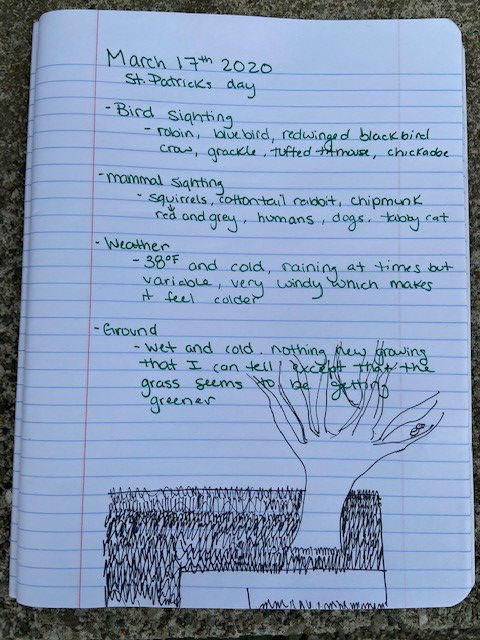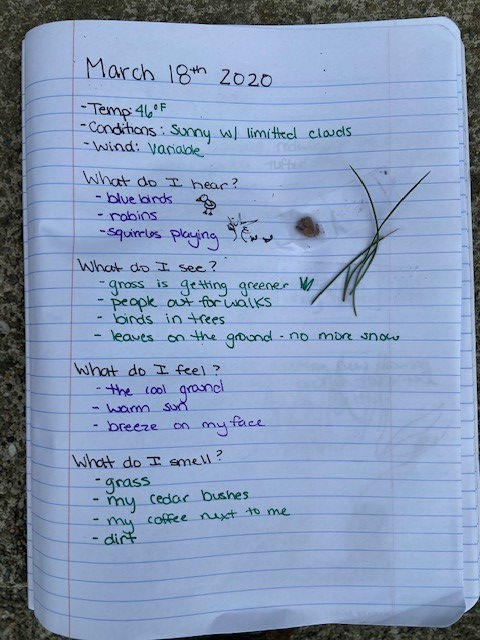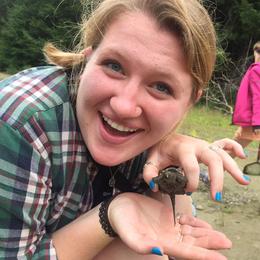A phenology journal is a great way to connect to nature and to yourself from your own home. You can do it for 5 minutes or 30 minutes. What better way to start than the first day of spring?! Let’s see how spring grows for us right outside our windows!
WHAT IS PHENOLOGY?
phe·nol·o·gy a branch of science dealing with the relations between climate and periodic biological phenomena (such as bird migration or plant flowering)
An easy way to think about it is that it’s the study of the seasons and change.
WHAT IS A PHENOLOGY JOURNAL?
A tool to record the changes of seasons around you.
The concept is simple – spend some time in nature and write down what you notice. This journal can be used from year to year so you can look back and notice trends or changes in the season.
WHAT IS THE VALUE?
Keeping a phenology journal helps you focus on your natural surroundings, thereby strengthening your connection to the natural world. Journaling, in general, helps click you into a state of mindfulness where you can actively engage with your thoughts and surroundings. Maybe you’ll notice things you never did before, right in your own back yard. This will help you practice a skill you may not think you're best at, like writing poems, drawing, painting, etc.
WHERE SHOULD I JOURNAL?
Right outside your door, inside your house looking out a window, or at a local park (please keep a good social distance from others). Pretty much as long as you can see outside, you can journal there. You should journal somewhere that you see everyday because the importance is in noticing the changes that are happening within the season and as the seasons change.
WHAT SHOULD I JOURNAL IN?
You should use something you feel comfortable with; it doesn’t have to be “perfect”. If you don’t want to waste a perfectly new notebook and would rather use scrap paper, that’s your choice. You want this experience to be as natural as possible and if you don’t like what you’re writing/drawing in it won’t be.
You can use:
-
a journal or notebook you already have
-
scrap paper can keep each page together in a folder
-
a calendar or planner
-
make your own journal
WHAT SHOULD I RECORD?
Ask yourself, “If I were to look back on this one year from now, what information would I find interesting?” That’s a good place to start when deciding which data you want to record.
For example, you can record the:
-
time and date
-
high/low temp of the day
-
sunrise/sunset times
-
amount of rain/snow received
-
general description of the weather (cloudy, windy, partly cloudy)
-
birds, plants, flowers that may be arriving
Do you like to paint or draw? Are you more interested in the facts of the day and keeping it more collection-based? Maybe in order to remember a flower or new plant that grew you want to pick a piece off and then tape it in to remember. Pick a few things to start with and go from there. You can always change this as you go and expand your journal.
A great way to get you started is to think about your five senses, like Karen’s lesson earlier in the week. When you’re sitting at your observation spot:
-
What are you seeing?
-
How does the air feel? How does the ground feel beneath you?
-
What do you smell?
-
Which sounds do you notice?
-
Are there any new plants growing
Here are some basic examples from my own personal phenology journal that I began during my work from home period.






